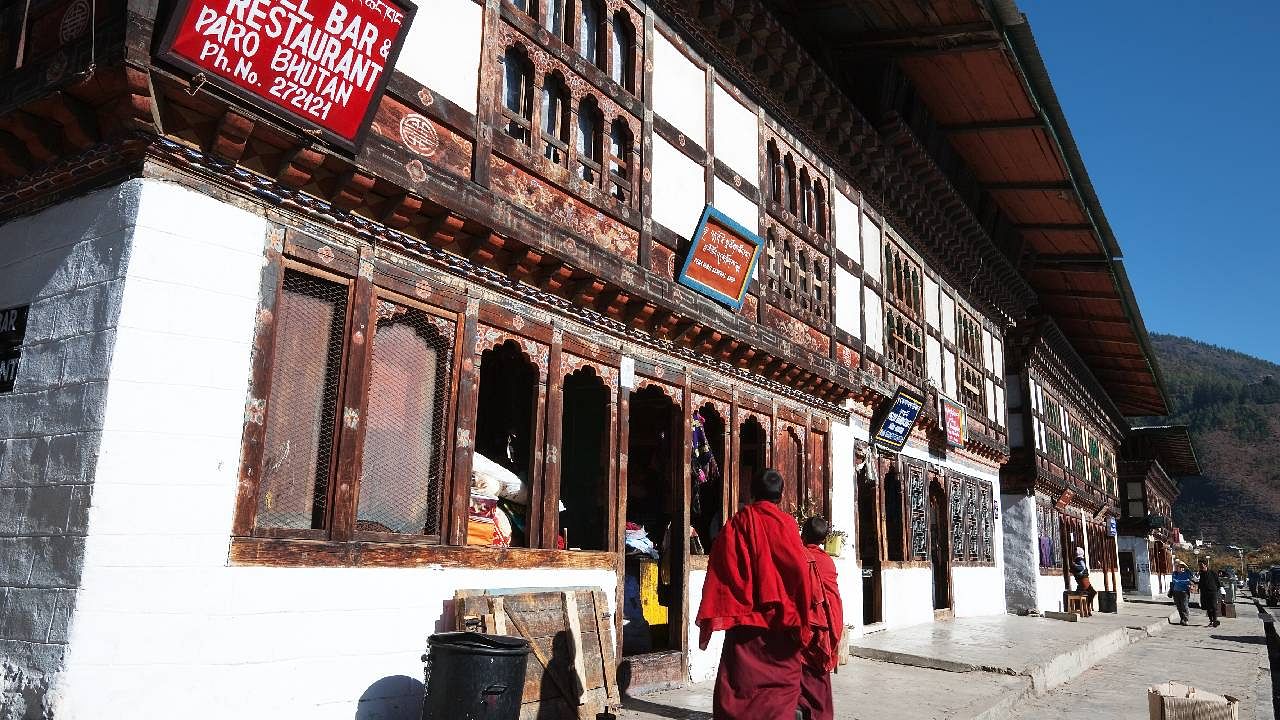
Representative image of Bhutan.
Credit: iStock Photo
They may be small, but they are in no way insignificant. The World Economic Forum reported in December last year that eight countries—Bhutan, Comoros, Gabon, Guyana, Madagascar, Niue, Panama, and Suriname—had reached net zero emissions, as per collated research from Energy Monitor. This meant that these eight countries had become carbon sinks, absorbing more carbon dioxide (CO2) than they emitted.
In 2015, 196 Parties at the UN Climate Change Conference (COP21) in France entered into the Paris Agreement, a legally binding international treaty on climate change. The goal of the agreement was to hold the “increase in the global average temperature to well below 2°C above pre-industrial levels” and “to limit the temperature increase to 1.5°C above pre-industrial levels.” Since then, emitting countries have been working on decarbonizing several sectors, including energy, industry, transport, and agriculture. Yet, according to research, by 2030, the world will still be emitting 50 gigatonnes of carbon dioxide, with greenhouse gas (GHG) emissions growing rapidly.
So, the stupendous achievements of these tiny countries are an example for bigger countries to learn from. All these countries are committed to sustainability and have strict environmental protection policies in place.
Comoros, in the Indian Ocean, is a poor and densely populated country, yet it has low emissions from agriculture, fishing, and rearing livestock and follows strict environmental protection policies. Madagascar’s economy, too, is that of agriculture and fishing. However, large-scale deforestation might change all this. Gabon, in Central Africa, is fortunate to be blessed with the Congo rainforests, which act as a carbon sink. Gabon is committed to non-deforestation and sustainable management of its natural resources. The UN has even called Gabon a model of environmental conservation. Guyana, on the northern coast of South America, is surrounded by the Amazon rainforest, another carbon sink. And so is the small Amazon nation of Suriname. Niue, in the South Pacific Ocean, has a small population, and fishing, agriculture, and tourism are its main economies. Panama, another net zero emitter, is blessed with rainforests and has a low population. The government here plans to reforest 50,000 hectares of land by 2050.
Let’s take the Himalayan Kingdom, Bhutan, India’s neighbour and the first nation in the world to reach net zero emissions. With a population of 800,000 and 70 per cent of its land covered by forests, Bhutan practises sustainable organic farming and forestry. It has protected natural parks and runs on hydropower, and tourism is its main economic activity. According to media reports, Bhutan charges a $200 sustainable development fee per day to tourists, doubling the cost for visitors. A small price to pay for eco-tourism and protecting the environment.
Forests are part of Bhutan’s sacred cultural heritage, and the government follows a climate-smart forest economy. Smart forest management helps minimise GHG emissions, encourage wildlife, limit forest fires, and sustainably manage forest produce for wood, fruit, and rubber, thus creating a circular economy. The country has launched a few pilot projects as a testbed for sustainable timber construction solutions. Bhutan’s forests had shrunk to 60% in 1990 due to excessive logging, but with strict laws and a systemic crackdown on illegal timber operations, forest coverage grew to 71% in just a decade.
However, analysts tend to be cautious about the challenges of maintaining a climate-smart forest economy, especially when demand outstrips supply. That’s when there’s a danger of degradation and deforestation, as has happened to some of the rainforest nations earlier.
Meanwhile, in India, Sikkim aims to become carbon negative with the initiative of planting 100 saplings for every newborn. A few months ago, media reports quoted a Forest Department study that said 112 government schools in Chandigarh had become carbon negative as part of an effort to make Chandigarh carbon neutral by 2030.
(The writer is a journalist and author)